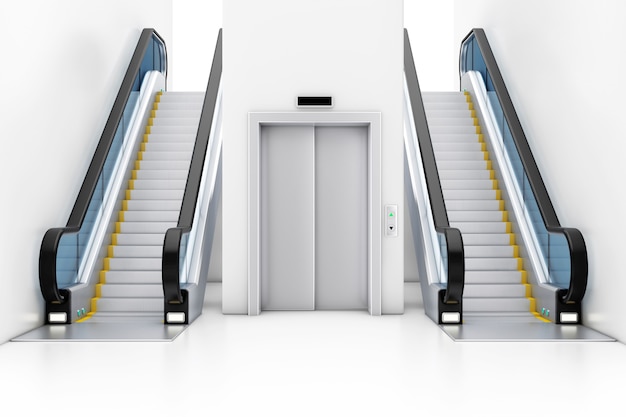London Lift Company: Giving Comprehensive Lift Solutions Throughout the Resources
London Lift Company: Giving Comprehensive Lift Solutions Throughout the Resources
Blog Article
Exploring the World of Elevators: Typical Concerns Dealt With by Various Lift Devices
As we navigate with the vertical transportation systems of modern buildings, elevators stand out as a crucial component of our everyday lives. From hydraulic elevators to grip systems and machine-room-less layouts, each lift kind comes with its collection of usual problems.
Hydraulic Lifts
Hydraulic lifts, frequently favored for low-rise buildings, use fluid stress to regulate the activity of the lift vehicle (lift repair companies). This system involves a hydraulic pump pushing oil right into a cyndrical tube, creating the lift to relocate the wanted direction. While hydraulic lifts are recognized for their smooth and peaceful procedure, they do feature their very own collection of usual concerns
One common issue with hydraulic elevators is oil leak. The seals in the hydraulic system can put on out gradually, leading to oil seepage. If left unaddressed, this not only creates a mess however can also influence the lift's efficiency. Furthermore, problems with the control system, such as malfunctioning valves or a malfunctioning pump, can cause disruptions in the elevator's activity.
Regular upkeep and punctual repair services are vital to make sure the smooth functioning of hydraulic elevators. By resolving these usual problems proactively, building proprietors can minimize downtime and make certain the safety and security and effectiveness of their vertical transport system.
Traction Lifts
When thinking about upright transport systems in buildings, another typical type besides hydraulic elevators is the grip elevator. Grip elevators operate utilizing a system of ropes and counterweights that relocate the elevator auto by gripping onto the hoist ropes. This device permits for smoother and quicker upright transportation contrasted to hydraulic systems.
Among the usual concerns dealt with by traction elevators is rope wear. The constant activity of the ropes within the grip system can result in put on and tear with time, potentially creating the elevator to breakdown or become harmful for use. Routine inspections and upkeep of the ropes are vital to make sure the lift's proper performance and safety and security.
Another problem that grip elevators might encounter is connected to the control system. Troubles with the control system can result in problems such as irregular motion, hold-ups in response times, and even total closures. Normal testing and maintenance of the control system are important to stop such issues and make sure the lift's integrity.
Machine-Room-Less (MRL) Elevators

One of the crucial components of MRL elevators is the compact gearless grip device that is installed within the hoistway. This maker efficiently drives the lift auto without the requirement for bulky equipment located in conventional traction elevators. Furthermore, MRL elevators generally make use of a counterweight system to stabilize the automobile, further improving their power effectiveness.
Regardless of their benefits, MRL elevators may encounter obstacles associated with upkeep and repair work because of the constrained space for equipment setup. Access for servicing parts within the shaft can be limited, requiring specialized training for service technicians. Correct upkeep schedules and regular assessments are critical to guarantee the continued smooth operation of MRL elevators.
Overloading and Weight Limitation Issues
Overloading and weight limitation concerns are crucial worries in elevator procedures. Elevator suppliers design lifts with particular weight capabilities to guarantee passenger security and equipment longevity.
When lifts are strained, it places extreme stress on the motor, wires, and other components, possibly triggering malfunctions or break downs. Security mechanisms such as sensing units and overload sensors are in area to prevent lifts from moving if they detect excess weight. Furthermore, exceeding weight restrictions can result in raised energy intake and damage on the elevator system.
To minimize straining problems, building managers ought to prominently show weight restrictions in lifts and educate owners on the importance of adhering to these constraints - lift repair companies. Regular upkeep checks by certified service technicians can additionally assist ensure that elevators are operating within risk-free weight parameters. By attending to overloading and weight limit problems proactively, important link building proprietors can boost elevator security and performance
Electrical System Failings
Exceeding weight limits in lifts can not only lead to mechanical problems but also possibly add to electric system failures within the lift facilities. Electrical system failings are an important problem in lift procedure, as they can trigger unexpected shutdowns, breakdowns, or also security risks.
Additionally, power surges or fluctuations in the electric supply can likewise disrupt the elevator's procedure, impacting its efficiency and security. These electrical disruptions can damage delicate lift components such as control board, motherboard, or sensors, leading to system failings. Routine maintenance and examinations are vital to determine and address possible electric concerns without delay, making sure the risk-free and efficient operation of elevator systems. By sticking to weight limitations and performing routine electrical system checks, building owners can reduce the threat of electric failures in lifts.
Verdict

Hydraulic lifts, commonly chosen for low-rise structures, utilize fluid stress to control the activity of the elevator car.When taking into consideration vertical transport systems in buildings, one more usual type aside from hydraulic lifts is the traction lift. Traction elevators run using a system of ropes and weights that relocate the elevator cars and truck by gripping onto the hoist ropes. Unlike standard lifts that need a different machine space to house click now the tools, MRL elevators integrate many of the elements within the shaft, removing the demand for a dedicated device area.In verdict, elevators deal with usual concerns such as hydraulic malfunctions, traction system failures, and electrical system issues.
Report this page